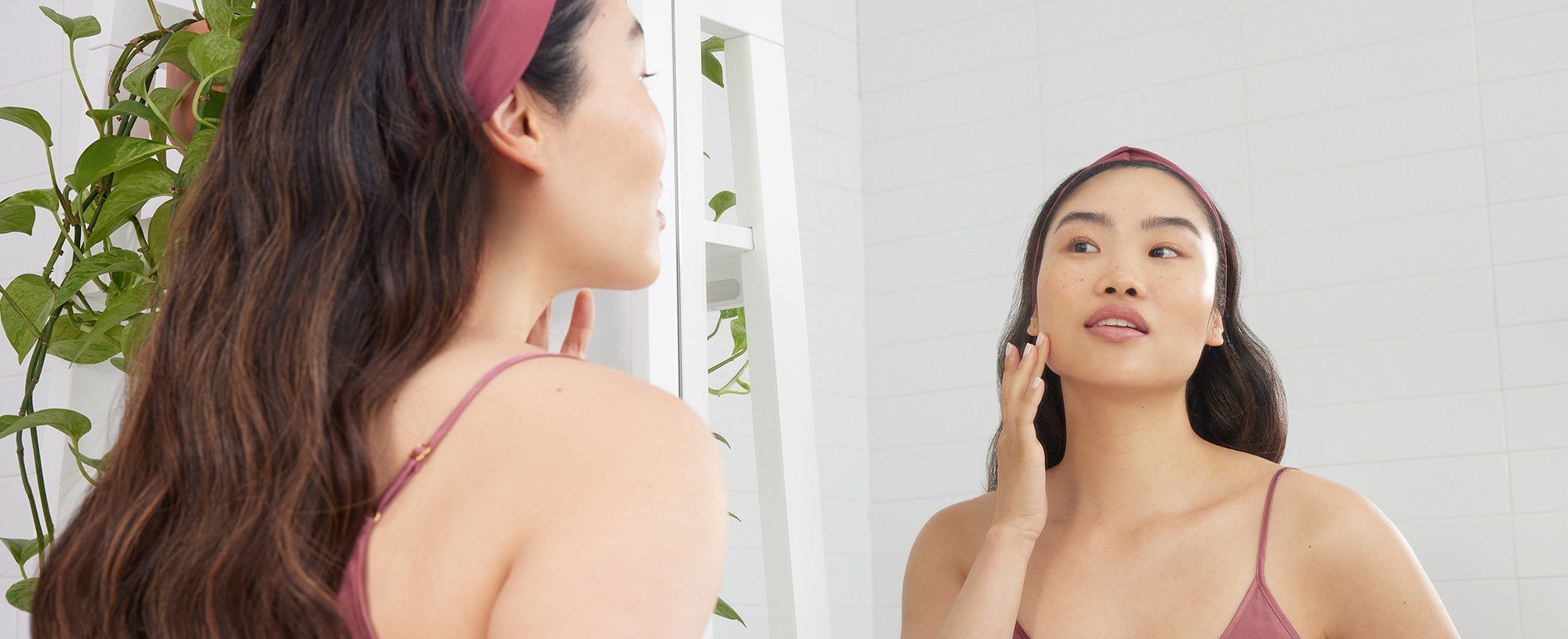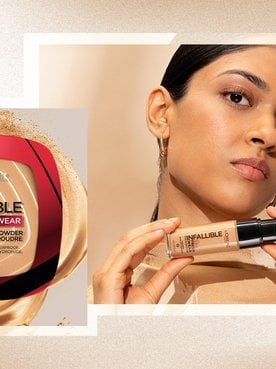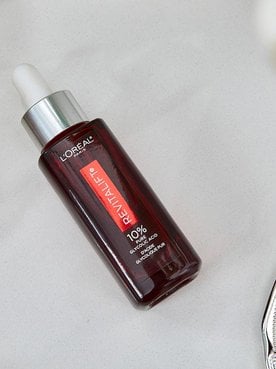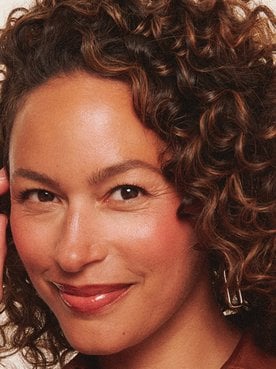If you deal with the occasional (or consistent) blemish, then you know a thing or two about skin spot treatments, and you may even own one. Creams and gels are common choices and more recently, hydrocolloid pimple patches that come in different shapes and sizes have seen a spike in popularity on social media.
Many reach for spot treatments when a pimple pops up, but unfortunately, they’re not a magic salve that can instantly heal blemishes. So if you’ve ever wondered about their actual efficacy, know that you’re not alone. To shed some light on this topic, we tapped Michelle Henry, MD FAAD, NYC-based board-certified dermatologist and L’Oréal Paris consultant. Read on to learn more about spot treatments, including how to tell if they work, and how to use one in your routine.
What Is a Spot Treatment?
A spot treatment is a cream, gel, serum or patch used to treat and reduce active acne blemishes and post-acne scars or dark spots. They often contain high concentrations of active ingredients, like salicylic acid (a beta hydroxy acid) or niacinamide (vitamin B3) to reduce swelling, redness and inflammation. “Some creams or gels can make a little film on the skin almost [like an acne] patch,” Dr. Henry shares. “[But] a lot of [spot treatments] are made from hydrocolloid dressings that help to reduce swelling and inflammation.”
Spot treatments come in many different formulas but their main aim is to help to speed up the healing process by reducing inflammation and redness. They also help to reduce the appearance of acne.
There are also spot treatments that help fade post-acne scars, sun spots or dark spots. These formulas will often include brightening ingredients like L-ascorbic acid or retinoids. According to Dr. Henry, niacinamide is also a popular choice for treatments like this because it can be used for skin brightening. Furthermore, The Journal of Clinical and Aesthetic Dermatology reports that topical niacinamide can decrease skin hyperpigmentation and reduce redness and blotchiness.
How to Use a Spot Treatment
Some spot treatments are applied directly to blemishes, while some are applied all over the face. “We always want to treat and prevent,” says Dr. Henry. “I prefer all-over treatments, and then spot treatments if you have something that breaks through your all-over treatment.” An all-over treatment would be a facial serum that’s applied to the entire face to help brighten the complexion, while a spot treatment would be a formula that’s applied only on specific areas of the skin to address concerns like dark spots or active breakouts.
Pay attention to the packaging on your skin care to ensure you’re using you’re treatment as intended, and always consult with your dermatologist before adding a new product or ingredient to your skin care routine.
While you should also thoroughly read the directions on the product packaging or brand’s website, there is a right way (and wrong way) to apply a spot treatment. Here’s a general guide on how to use a spot treatment in your skin care routine.
1. Prep the Skin
Before applying a product or spot treatment, cleanse your skin. Applying any type of facial serum or spot treatment on dirty skin will have abysmal effectiveness and may even lead to potential irritation.
2. Apply Your Facial Serums
If you’re using a facial serum to target specific skin concerns, such as dullness, dark spots or acne breakouts, apply it all over the skin. Follow the instructions on the packaging for the correct application. Products like these aim to prevent and improve certain skin concerns and are most effective when they’re applied to your entire face.
3. Apply Your Targeted Spot Treatment
After all-over serums comes targeted treatments. The difference is that a targeted treatment is going to be applied directly to blemishes or dark spots (depending on what you’re treating), not all over the face. A spot treatment serves to target blemishes that break through your other treatments and facial serums, as per Dr. Henry.
4. Moisturize
No skin care routine is complete without moisturizer, regardless of your skin type. It will help to lock in hydration so your serums and spot treatments can penetrate the skin and work effectively.
How to Know if a Spot Treatment Is Working?
According to Dr. Henry, a good way to determine if your spot treatment is working is simply if you see improvement in the skin concern you’re trying to address. If you notice a rash forming or any type of skin irritation, that’s a good sign that your spot treatment is not working. In this case, you should cease use immediately, and check in with your dermatologist.
L’Oréal Paris Products That Can Help Improve Dark Spots
As Dr. Henry mentioned, it’s always a good idea to treat your skin as a whole to target and prevent different types of skin concerns. Here are a few L’Oréal Paris products that can help address dark spots in your routine.
L’Oréal Paris Bright Reveal 12% [Niacinamide + Amino Sulfonic + Ferulic Acid] Dark Spot Serum
This niacinamide serum is applied all over the skin to visibly reduce the appearance of dark spots with continued use over time. It includes ferulic acid and amino sulfonic acid to lightly exfoliate and brighten the skin. Skin looks clearer after just two weeks of consistent, daily use,
Shop the Products
L’Oréal Paris Revitalift Pressed Night Moisturizer with Retinol + Niacinamide
This lightweight night cream contains niacinamide and retinol to smooth wrinkles, even skin tone, brightens and counteracts the drying effects of retinol. Plus, it doesn’t feel heavy or greasy on the skin.
L’Oréal Paris Revitalift Derm Intensives 12% Pure Vitamin C + E + Salicylic Acid Serum
Vitamin C is a very popular antioxidant when it comes to brightening the skin and targeting visible signs of aging. This potent formula helps to increase radiance, even skin tone and minimize the appearance of large pores and fine lines. L’Oréal Paris experts recommend applying it in the morning and using the aforementioned niacinamide serum at night to effectively improve visible dark spots.L’Oréal Paris Revitalift Derm Intensives 5% Glycolic Acid Peeling Toner
Glycolic acid is a popular alpha hydroxy acid (AHA) that can help exfoliate and brighten the skin. This toning liquid works to gently remove surface level dead skin cells to reveal smoother, brighter skin, with continued use over time. It’s even infused with aloe vera to soothe the skin, and it’s suitable for all skin types.
L’Oréal Paris Bright Reveal Broad Spectrum SPF 50 Daily UV Lotion
Sunscreen is not a spot treatment or facial serum that improves skin issues per se, but it’s the best tool you can keep in your skin brightening regimen. This lightweight formula has UVA and UVB filters to protect against the sun’s rays which can cause aging and burning. If you’re actively working to fade dark spots but you’re not wearing SPF daily, you’re negating all the work that you do with your skin care routine because you're exposing your unprotected skin to the sun.
Next: Should You Put Sunscreen On Before or After Moisturizer?
Photographer: Stephanie Price







